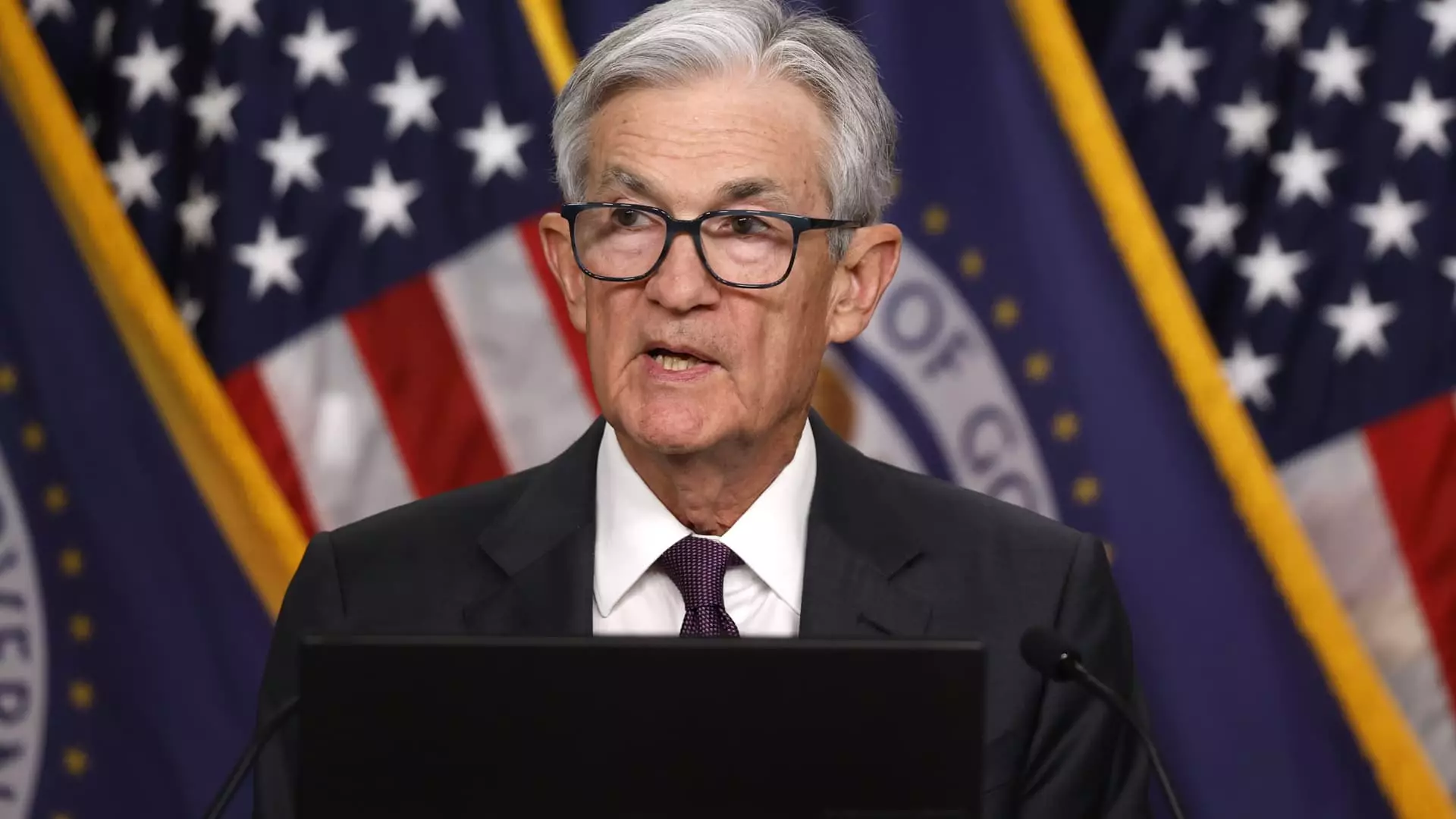In a world increasingly riddled with political turmoil and economic uncertainty, the Federal Reserve (Fed) has chosen to keep interest rates unchanged at 4.25%-4.5%. This decision, though devoid of dramatic flair, mirrors an urgent need for caution in an era where the outcomes of governmental actions remain unpredictable. The Fed’s indecision can easily be paralleled with the broader uncertainty surrounding the Trump administration’s trade strategies, which continue to hang like a dark cloud over the national economy. With the policy direction shifting almost daily, the Fed finds itself treading water, attempting to uphold its dual mandate of maximizing employment while stabilizing prices.
However, it’s disheartening to see this crucial institution hindered by what is essentially a gamble on the administration’s ability to finalize an effective trade policy. Are we to remain passive in our economic future, holding onto the hope that a resolution in trade negotiations will magically uplift our economy? Such dependency on the whims and pledges of a political structure exposes the fragility of our economic foundation.
Calibrating Between Risks: A Dismaying Balancing Act
The Fed’s latest statement articulates a growing concern regarding the dual risks of rising unemployment and inflation. With tariffs introduced by the administration, inflationary pressures are expected to intensify while simultaneously posing a risk to economic growth. This precarious tightrope act raises the ominous specter of stagflation—a word that terrifies mainstream economists, resonating fear of the 1980s economic malaise we hoped to leave behind. The notion that we could be revisiting a scenario where both inflation and unemployment swell is a bitter pill for anyone committed to economic prosperity.
The Fed seems to recognize that simply reacting to the uncertainty caused by fiscal policy is inadequate. It must actively seek clarity without being overly aggressive with rate cuts. While the overarching goal of balancing policy seems noble in theory, the reality is that we’re skating on thin ice. If there is one thing history teaches us, it’s that stagnation in pivotal economic policies typically heralds imminent disaster.
Impact of Tariffs: A Double-Edged Sword
Understanding the fallout from tariffs has become increasingly complex for businesses and consumers alike. The catch-22 is unmistakable: tariffs may offer momentary relief to domestic industries but often do so at the cost of goods’ affordability for consumers. The rise in prices is projected as a short-term outcome; however, the long-lasting impacts of consumers recalibrating their spending habits can initiate a downward spiral in economic growth.
It is imperative to recognize that every tariff doesn’t just target foreign entities; it also ultimately inflicts harm on the very citizens who are supposed to be safeguarded. A fluctuating economy filled with uncertainty will only reduce consumer confidence and dampen spending activity—an essential catalyst for economic growth. The Fed’s struggle to navigate this complex environment showcases a reluctance to accept radical fiscal interventions from the government could have widespread repercussions, making their task all the more daunting.
The Unmarked Road Ahead: Summoning Patience and Fortitude
Navigating the current economic terrain requires not just prudence but also profound anticipation of potential outcomes stemming from government intervention or inaction. Amid various indicators—where job growth remains relatively steady and inflation whispers near the Fed’s target—the overarching sentiment is one of uncertainty. The ability of policymakers to forecast inconsistencies in economic performance is now one of their greatest challenges.
This begs the question: is patience truly a virtue when the foreseeable future is increasingly elusive? The recent volatility observed in stock markets should serve as a wake-up call that the economic scaffolding we often take for granted is ready to crumble at any moment. Without decisive policy action and willing adaptability from the Fed, we risk complacency and drift further from a sound economic footing.
The Illusion of Control in Global Economics
The future of the U.S. economy now largely hinges on a trade war defined by its unpredictability. It’s discouraging to witness macroeconomic policies that should enhance stability essentially serving as grasping attempts to maintain control over a chaotic landscape. Decisions by the Federal Open Market Committee might appear conventional but are anything but simple. They are laden with implications that will reverberate through markets and main streets alike.
As central banks and governments continuously chase after stability, one must wonder if they are merely prolonging the inevitable fallout of a mismanaged trade policy. The public deserves a robust economic plan that considers long-term ramifications instead of maintaining a façade of stability amidst growing apprehension. In a time where transformation is critical, the burden of righting the economic ship lies not solely on the Fed but the collaborative will of our nation’s policymakers to ensure they steer us toward a future genuinely reflective of American resilience and ingenuity.

Leave a Reply